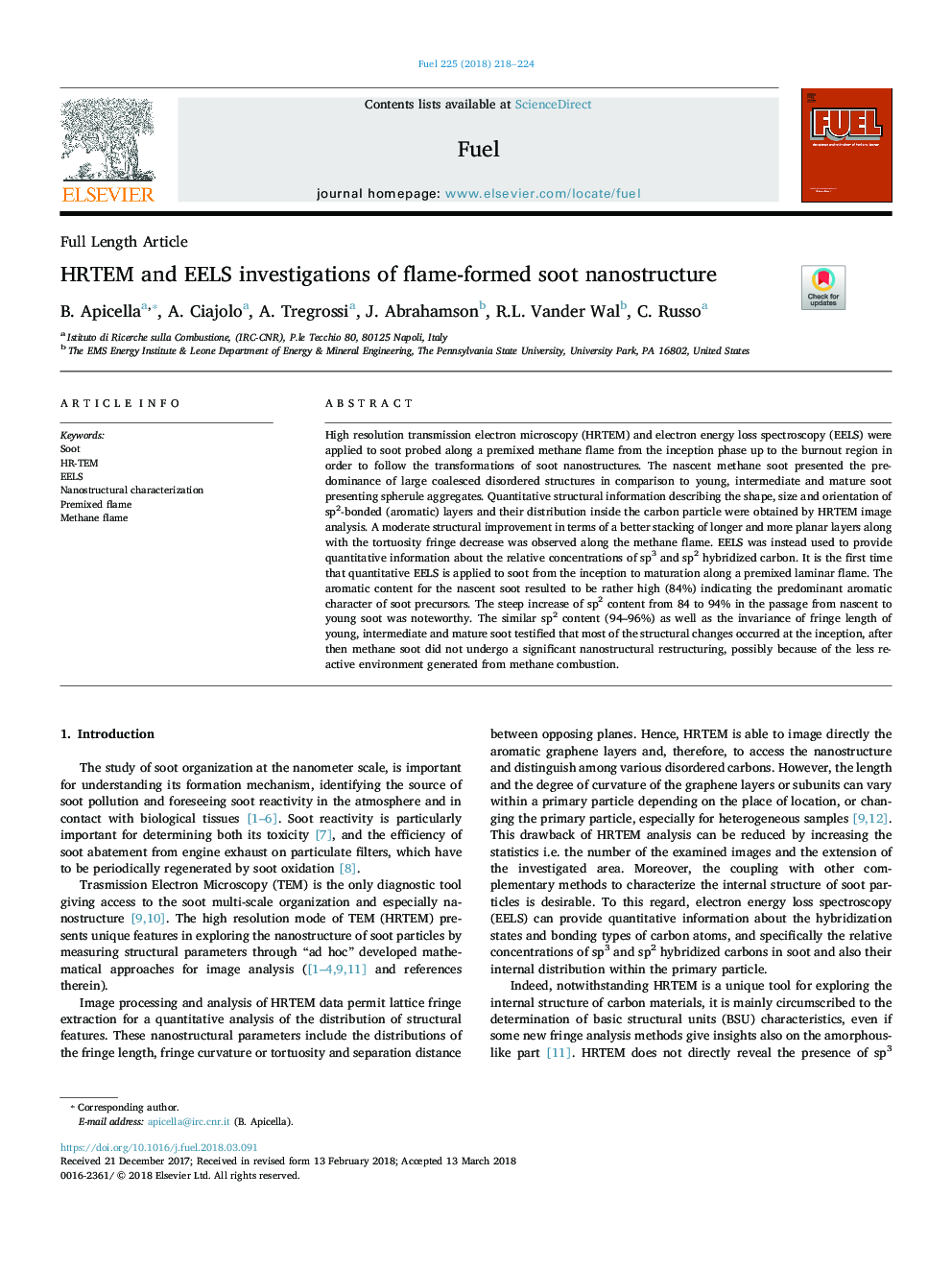| Article ID | Journal | Published Year | Pages | File Type |
|---|---|---|---|---|
| 6631080 | Fuel | 2018 | 7 Pages |
Abstract
High resolution transmission electron microscopy (HRTEM) and electron energy loss spectroscopy (EELS) were applied to soot probed along a premixed methane flame from the inception phase up to the burnout region in order to follow the transformations of soot nanostructures. The nascent methane soot presented the predominance of large coalesced disordered structures in comparison to young, intermediate and mature soot presenting spherule aggregates. Quantitative structural information describing the shape, size and orientation of sp2-bonded (aromatic) layers and their distribution inside the carbon particle were obtained by HRTEM image analysis. A moderate structural improvement in terms of a better stacking of longer and more planar layers along with the tortuosity fringe decrease was observed along the methane flame. EELS was instead used to provide quantitative information about the relative concentrations of sp3 and sp2 hybridized carbon. It is the first time that quantitative EELS is applied to soot from the inception to maturation along a premixed laminar flame. The aromatic content for the nascent soot resulted to be rather high (84%) indicating the predominant aromatic character of soot precursors. The steep increase of sp2 content from 84 to 94% in the passage from nascent to young soot was noteworthy. The similar sp2 content (94-96%) as well as the invariance of fringe length of young, intermediate and mature soot testified that most of the structural changes occurred at the inception, after then methane soot did not undergo a significant nanostructural restructuring, possibly because of the less reactive environment generated from methane combustion.
Related Topics
Physical Sciences and Engineering
Chemical Engineering
Chemical Engineering (General)
Authors
B. Apicella, A. Ciajolo, A. Tregrossi, J. Abrahamson, R.L. Vander Wal, C. Russo,
